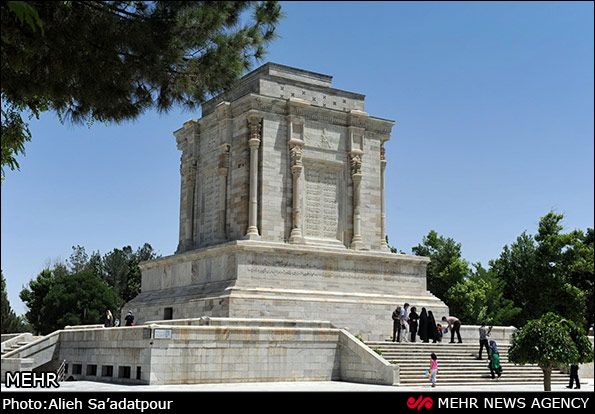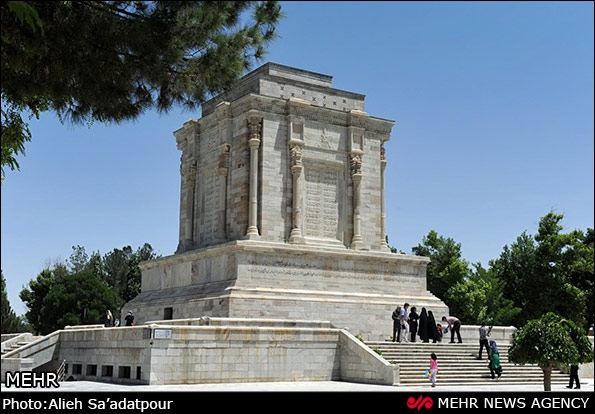 TUS, May 17 (MNA) � Iranians have celebrated the day of Firdausi, the author of great Persian epic �Shahnameh�, on May 15.
TUS, May 17 (MNA) � Iranians have celebrated the day of Firdausi, the author of great Persian epic �Shahnameh�, on May 15.Abu Al-Qasem Firausi (also Ferdowsi) is a highly revered Persian poet and the author of the epic of Shahnameh, Persian for Book of Kings which is the world's longest epic poetry created by a single poet, and the national epic of Iran and the Persian speaking world.
He is considered to be one of the greatest Persian poets and the most influential figure in Persian literature to have ever lived and a national hero.

Firdausi tomb in Tus, the sculpture of Shahnameh stories
Iran Chamber writes that Firdausi was born in Khorasan in a village near Tous, in 935 CE His great epic The Shahnameh (The Epic of Kings), to which he devoted most of his adult life, was originally composed for the Samanid princes of Khorasan, who were the chief instigators of the revival of Persian cultural traditions after the Arab conquest of the seventh century. During Firdausi's lifetime this dynasty was conquered by the Ghaznavid Turks, and there are various stories in medieval texts describing the lack of interest shown by the new ruler of Khorasan, Mahmoud of Ghaznavi, in Firdausi and his lifework. Firdausi is said to have died around 1020 CE in poverty and embittered by royal neglect, though confident of his and his poem's ultimate fame.

Firdausi tomb in Tus
The Shahnameh or The Epic of Kings is one of the definite classics of the world. It tells hero tales of ancient Persia. The contents and the poet's style in describing the events takes the readers back to the ancient times and makes them sense and feel the events. Firdausi worked for thirty years to finish this masterpiece.

Firdausi tomb in Tus, the sculpture of Shahnameh stories
The Shahnameh of Firdausi, a poem of nearly 60,000 couplets, is based mainly on a prose work of the same name compiled in the poet's early manhood in his native Tus. This prose Shahnameh was in turn and for the most part the translation of a Pahlavi (Middle Persian) work, the Khvatay-namak, a history of the kings of Persia from mythical times down to the reign of Khosrow II (590-628 CE), but it also contained additional material continuing the story to the overthrow of the Sasanians by the Arabs in the middle of the 7th century A.D. The first to undertake the versification of this chronicle of pre-Islamic and legendary Persia was Daqiqi, a poet at the court of the Samanids, who came to a violent end after completing only 1,000 verses. These verses, which deal with the rise of the prophet Zoroaster, were afterward incorporated by Firdausi, with due acknowledgements, in his own poem.

Firdausi tomb in Tus
An important feature of this work is that during the period that Arabic language was known as the main language of science and literature, Firdausi used only Persian in his masterpiece. As Firdausi himself says "Persian language is revived by this work".

Firdausi tomb in Tus, the sculpture of Firdausi himself
Firdausi passed away in 1020 CE and was buried in Tus which is today visited by many Persian Poetry lovers and every year on May 15 the country celebrates Firdausi Commemoration Day.











